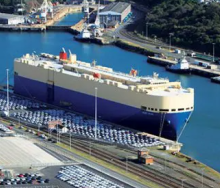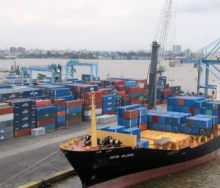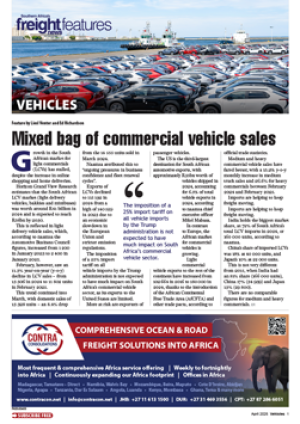The container shipping industry faced a significant downturn in the first quarter (Q1) of 2025, with average freight rates for Chinese exports dropping by 28%.
It marks the steepest decline for this period in two decades.
The latest data from the China Containerized Freight Index (CCFI) reflects mounting challenges in global trade and shipping dynamics.
The CCFI, which tracks export freight rates from ten major Chinese ports based on data from 23 liner operators, fell sharply from 1 548 points at the start of the year to 1 112 points by the end of March.
The Shanghai Containerized Freight Index (SCFI), which measures spot rates for exports from Shanghai, also recorded a dramatic drop of 46%, its largest Q1 fall since its inception in 2009.
The current situation is entirely out of kilter with traditional trends.
Historically, Q1 rates have seen relatively stable freight rates, with an average decline of only 2% since 2006.
This year’s drop far exceeds previous records, including a 24% fall in 2023, underscoring the severity of current market conditions.
The decline comes despite a promising start to the year, with export volumes from East and Southeast Asia growing by 20% year-on-year in January.
However, several factors have contributed to the downturn, namely overcapacity, rerouting, as well as geopolitical and economic uncertainty.
A glut of container vessels, introduced into the global shipping system to cope with Red Sea security risks and longer sailing time around the Cape of Good Hope, has strained market balance.
Ships bypassing traditional routes through the Red Sea and Suez Canal have absorbed 10-12% of fleet capacity.
Various liner trade news sources report that heightened tensions and concerns about recession have weakened global demand.
Additionally, trade to Europe and the Mediterranean experienced rate drops of 33% and 32%, respectively.
North-south trade saw even sharper reductions, with rates to South Africa falling by 40%, Australia/New Zealand by 38%, South America by 35%, and West Africa by 26%.
Notably, freight rates between China and Japan have remained stable.
Despite this sharp decline, average rates at the end of Q1 were only 8% lower than a year ago and remained 39% higher than pre-pandemic levels in 2019.
However, with container ship fleet capacity expected to grow by another 5.4% during 2025, further pressure on freight rates is anticipated.
If volume growth falters and ships return to normal routings through the Red Sea area, rates may revert to levels last seen in 2019.
Niels Rasmussen of the Baltic and International Maritime Council (Bimco) said these developments could signal prolonged challenges for carriers as they navigate oversupply and fluctuating demand.
Bimco’s chief shipping analyst said the slump in freight rates reflected broader uncertainties in global trade, exacerbated by tariff policies such as those recently announced by US President Donald Trump.
These tariffs have raised trade tensions and impacted consumer demand globally, further complicating recovery prospects for the shipping industry. – Compiled using various sources, including S&P Global and Hellenic Shipping News













